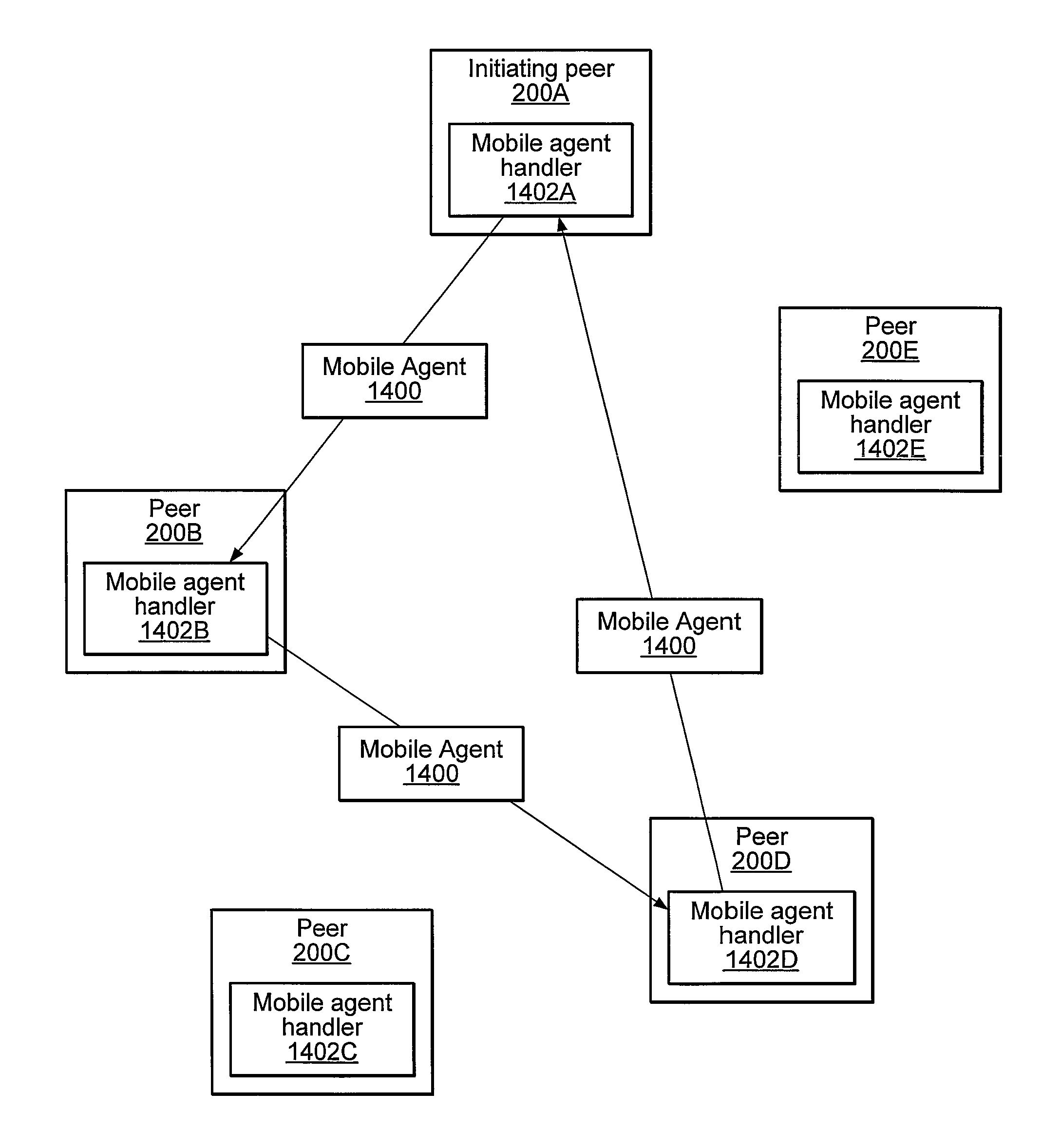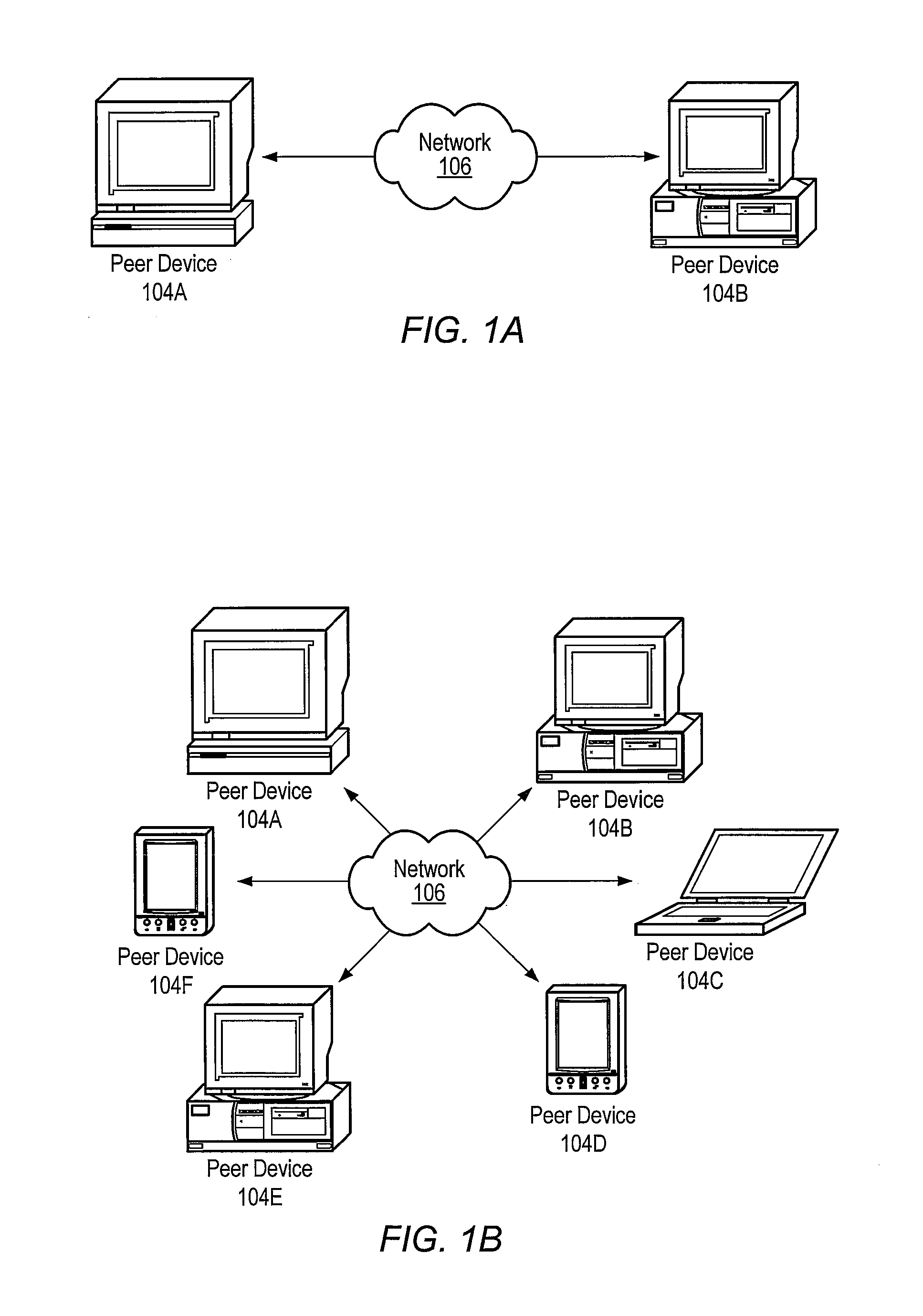Presence detection using mobile agents in peer-to-peer networks
a peer-to-peer network and presence detection technology, applied in the field of computer networks, can solve the problems of not being able to locate and catalog the ever-increasing amount of information by a single search engine or portal, and being unable to find useful information in real tim
- Summary
- Abstract
- Description
- Claims
- Application Information
AI Technical Summary
Problems solved by technology
Method used
Image
Examples
Embodiment Construction
[0077]Embodiments of a system and method for implementing mobile agents in peer-to-peer (P2P) networking environments are described. A mobile agent may be software configured to operate on different nodes in a network and gather information or perform some service on host nodes in the network for a program, system, or user. For example, a mobile agent may be created on one node in a network, start executing on that node, be transferred to another node, and continue executing on that other node. A mobile agent may be configured to perform one or more operations on network nodes hosting the mobile agent. A mobile agent may be configured to navigate through the network from node to node according to an itinerary.
[0078]FIG. 34 illustrates a device 1300 (also referred to herein as a node) including a processor 1301, memory 1302 coupled to the processor 1301, and one or more network connections 1303, for participating as a peer node in a peer-to-peer network according to one embodiment. T...
PUM
 Login to View More
Login to View More Abstract
Description
Claims
Application Information
 Login to View More
Login to View More - R&D
- Intellectual Property
- Life Sciences
- Materials
- Tech Scout
- Unparalleled Data Quality
- Higher Quality Content
- 60% Fewer Hallucinations
Browse by: Latest US Patents, China's latest patents, Technical Efficacy Thesaurus, Application Domain, Technology Topic, Popular Technical Reports.
© 2025 PatSnap. All rights reserved.Legal|Privacy policy|Modern Slavery Act Transparency Statement|Sitemap|About US| Contact US: help@patsnap.com



